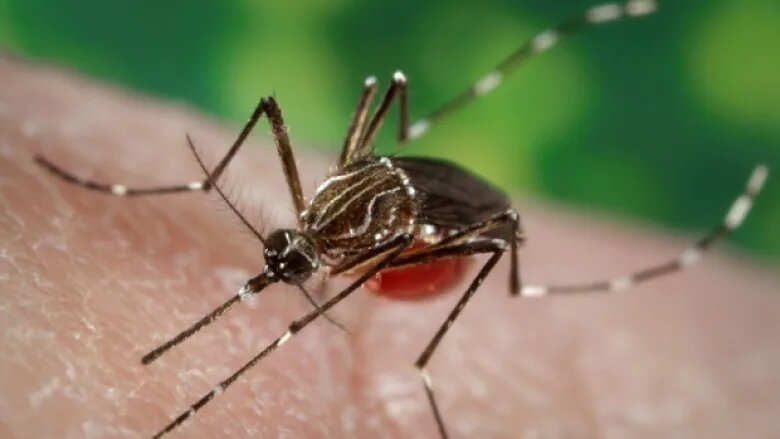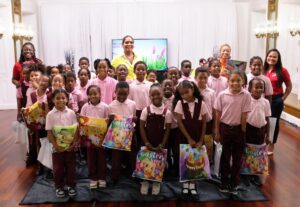CHARLOTTE AMALIE — Dengue fever is on the rise in the region and a recent study estimates more than half of children in the territory have had a prior infection.
Dengue is a mosquito-borne illness that can cause a fever and rash. Severe infections, particularly secondary ones, can be fatal.
The disease is endemic to tropical areas such as the U.S. Virgin Islands and Puerto Rico, two U.S. territories in the Caribbean Sea about 40 miles apart. A U.S. vaccine just became available last year.
Experts say the study calls attention to tropical diseases that have been neglected by global health initiatives and that are even more urgent amid climate change, which creates prime conditions for vector-borne diseases.

“Diseases like dengue are increasing in many impoverished communities,” said Dr. Gaurab Basu, a primary care physician and health equity fellow at Harvard University’s Center for Climate, Health and the Global Environment.
“Communities in the global south contribute to climate change much less – orders of magnitude less – than developed countries. And yet, they’re bearing the burden.”
Researchers studied blood samples of more than 350 children ages 9 to 13 in the U.S. Virgin Islands between April and May 2022. They estimated about 51% have had dengue fever, based on seroprevalence, or antibodies in the blood, according to the Centers for Disease Control and Prevention study.
Testing for a prior infection is important because a second infection of dengue is most dangerous, and a child can only receive the vaccine if they’ve already been infected.
Outbreaks – such as in 2021 in the Marshall Islands, 2018 in American Samoa, and 2013 in the Virgin Islands – typically drive surges in cases.
However, there is limited granular data on case and death rates in the U.S. Virgin Islands, with CDC data showing no cases reported since 2020 and no dengue-related deaths since 2012. That could be due to underreporting such as mild cases going under the radar, said Basu and Dr. Matthew Collins, an assistant professor at Emory University Department of Medicine’s infectious diseases division.
Still, experts say dengue is on the rise in the region and other places where it’s endemic. Last year, Puerto Rico saw more than 800 cases, up from 509 in 2021.
Across Puerto Rico and the U.S. Virgin Islands, cases and hospitalizations are highest among kids and teens ages 10 to 19. In southern Puerto Rico, 44 percent of children and teens ages 9 to 16 showed evidence of past dengue infection, according to data reported by the CDC.
Is there a vaccine for dengue?
In 2019, the Food and Drug Administration approved a vaccine, Dengvaxia, that became available last year only for those aged 9 to 16 who’ve had laboratory-confirmed previous infection and live in areas where the disease is endemic.
The vaccine isn’t approved for U.S. travelers who aren’t living in those areas.
While Dengvaxia is the only U.S. vaccine, the European Union and Brazil have a second shot, QDENGA, that doesn’t require previous infection and is approved for the prevention of dengue fever from all four subtypes of the virus. It’s eligible for patients ages 4 to 60.
Dengue fever symptoms: How dangerous can it be?
Dengue fever is rare in the U.S. mainland, where nearly all cases have been among travelers, the CDC says. When outbreaks do occur, they’re typically limited to small areas.
Many people bitten by an infected mosquito may be asymptomatic, but in mild cases they may experience fever, a rash and body aches that last about a week. A severe infection can cause shock, internal bleeding, organ failure and death. About 1 in 20 people develop severe dengue.
A second infection is the biggest risk factor for severe dengue, which can become life-threatening within hours.
One analysis estimated as many as 80% of people throughout the Caribbean had previous infections, according to an analysis published this month in the journal Current Opinion on Pediatrics. The researchers found higher risk of illness and death among children.
Overall and across regions, death rates for dengue can be as high as 13% in untreated patients, the CDC says.
What is a neglected tropical disease?
About 4 billion people live in areas with a risk of dengue, according to the CDC– yet it is one of 20 neglected tropical diseases in tropical and subtropical parts of the world such as in the Caribbean.
“There’s a major global inequity issue of what vaccines we manufacture and distribute, and the cost of vaccines and our delivery systems,” Basu said.
The World Health Organization calls these illnesses “diseases of the bottom billion,” saying that they’ve been neglected by global public health initiatives and disproportionately affect women and children.
“Developing things like vaccines and therapeutics is a challenge,” Collins said. “Things are a little bit backward in global health: Some of the companies are really exploring the traveler market, even though that proportion of risk and health burden is low among travelers compared to the people living in the destination.”
Climate change ‘is a global health inequity turbocharger’
Mosquitos thrive in humid places and hotter weather, and they often lay their eggs in warm, standing water. Diseases like dengue are also at heightened concern after natural disasters like Hurricane Maria, which devastated the Virgin Islands and Puerto Rico.
“There could be areas that have debris, even from more recent storms, and it doesn’t take much for water to collect,” said pediatrician and global epidemiology expert Dr. Jessica Fairley, an associate professor at Emory University.
“Climate change will absolutely change the distribution and prevalence of mosquito-borne illnesses,” he said. “We call it a kind of ‘Goldilocks’ space, where temperature, the amount of flooding, the amount of drought, all come together to enable a lot of breeding of mosquitoes.”
Island and impoverished communities are on the front lines of climate change like the U.S. Virgin Islands, where about 20 percent of people live in poverty and about three quarters of the population is Black.
“Climate change, at its heart, is a global health inequity turbocharger,” Basu said. “It is causing the fault lines of inequity around the world to increase in impoverished communities.”
By NADA HASSANEIN/USA Today

